Beyond Black Holes: Could LIGO Have Detected Merging Neutron Stars For The First Time?

For the first time, the gravitational wave sky and the astronomical sky might be coming together. It’s a new era, at long last.
“Presently thought to be the most powerful explosions in nature… their sources have only recently been localized by observations of associated afterglows in X-rays, visible light, and radio waves, delayed in that order.”
–Richard Matzner, on the dictionary entry for Gamma Ray Burst
LIGO, the Laser Interferometer Gravitational-wave Observatory, achieved one of the holy grails of physics: by directly detecting gravitational waves for the first time. This was not an isolated event, either, but the first in a class of events that LIGO has been continuing to expose. During its time of operation, LIGO has seen three significant signals that correspond to the mergers of massive, binary black holes. Each one resulted in the emission of gravitational waves so significant, they compressed-and-rarefied the twin interferometers on Earth by enough to detect these sources from over a billion light years away. Now, scientists are confronting the possibility that LIGO, now joined by VIRGO, may have crossed into the next frontier of gravitational wave phenomena: neutron star mergers.
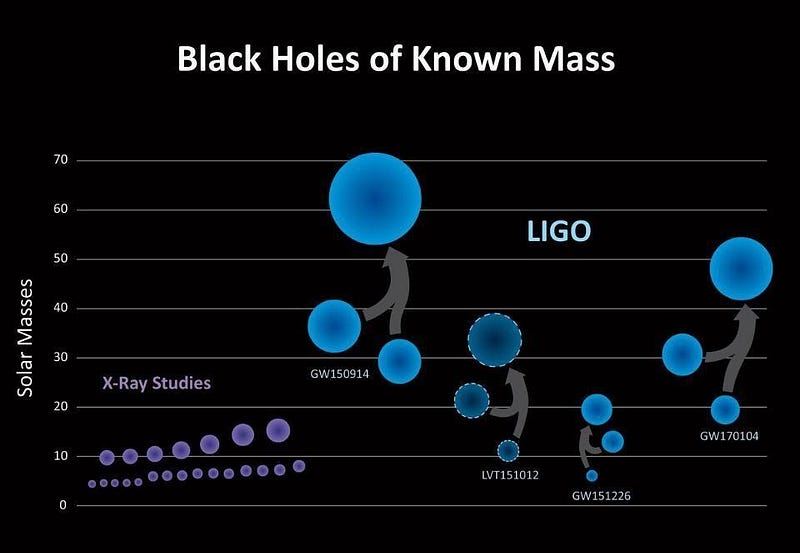
There are three key differences between neutron star mergers and black hole mergers. Because neutron stars are less massive but physically larger, the gravitational wave signals they emit are lower in amplitude and occur over longer periods. However, the signal is extremely predictable over much longer periods of time than previous mergers show: for many seconds, minutes, or even hours, unlike the fraction-of-a-second signals for massive black holes. It means that we need to be significantly closer to neutron stars than black holes to see them merge: hundreds of millions of light years at most, at least with the current LIGO/VIRGO setup. We can detect them, but we need to be roughly ten times closer to get the same amplitude signal that we’ve seen from black holes. And finally, unlike black holes, there ought to be an optical counterpart, arising from the merger of two such massive, compact objects.

It’s long been speculated that neutron star-neutron star mergers are the cosmic origin source of fast gamma-ray bursts, which are some of the most short-lived, high-energy light signals in the Universe. The merger of two neutron stars should result in a giant release of energy, and a spectacular reaction which creates the majority of the ultra-heavy elements in the Universe, as each one is speculated to create about a thousand Earth-masses worth of heavy elements that go beyond iron in the periodic table. This is where the majority of the Universe’s gold, platinum, mercury, lead and uranium come from, and where practically all of Earth’s stores of these elements come from, too. Yet they’re also speculated to produce gravitational waves, and for over 90% of their combined mass to form a post-merger black hole.
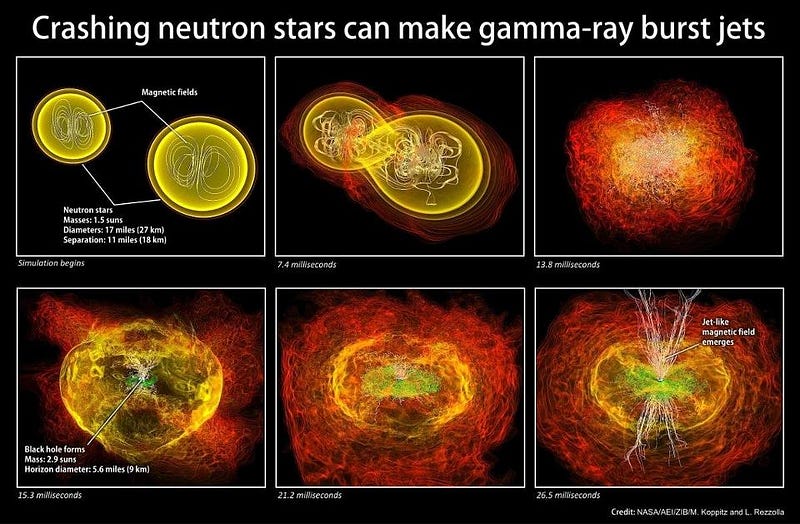
Predicting how frequently these mergers should occur is a daunting task. We don’t know how many black hole-black hole pairs there are, as gravitational wave astronomy is only beginning to uncover the population that’s out there. Yet if merging neutron stars have only one-tenth the amplitude of merging black holes, that means they can only be one-tenth as distant… which means the volume of space that LIGO/VIRGO is sensitive to is only one-thousandth of the volume where we can detect black holes. In order to have a reasonable shot at seeing a merging pair of neutron stars, they’d have to be hundreds of times as abundant as merging black holes.
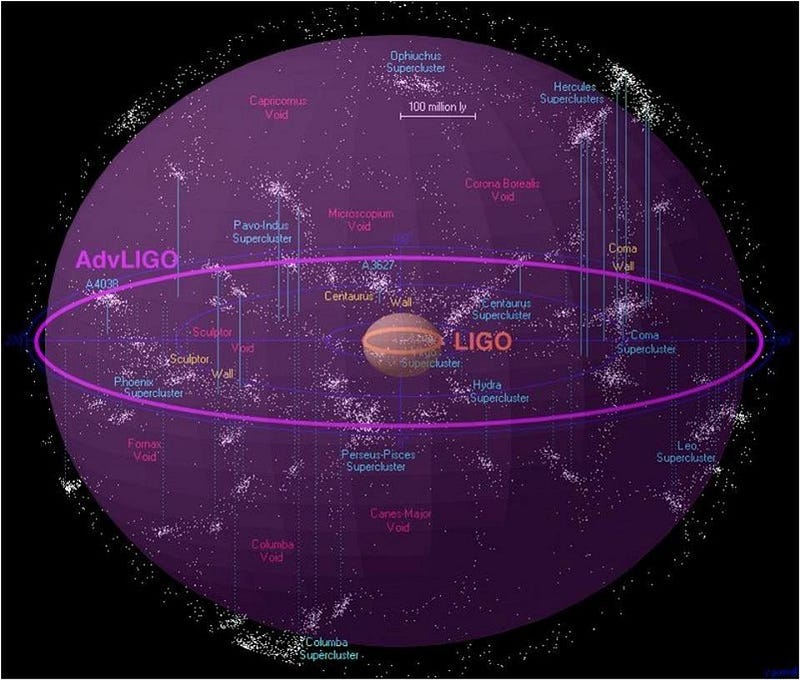
But this may nevertheless be the case! There is no chance of success if we don’t look, and yet looking for neutron stars is something we get for free so long as these gravitational wave observatories are running. The templates are straightforward (if numerically intensive) to calculate, which means it’s only a question of extracting the signal from the raw data. With three observatories running together, not only is LIGO/VIRGO more sensitive, but it can work to triangulate position. If one of these events occurs, for the first time, we’ll have a chance of pinpointing exactly where in space to look.
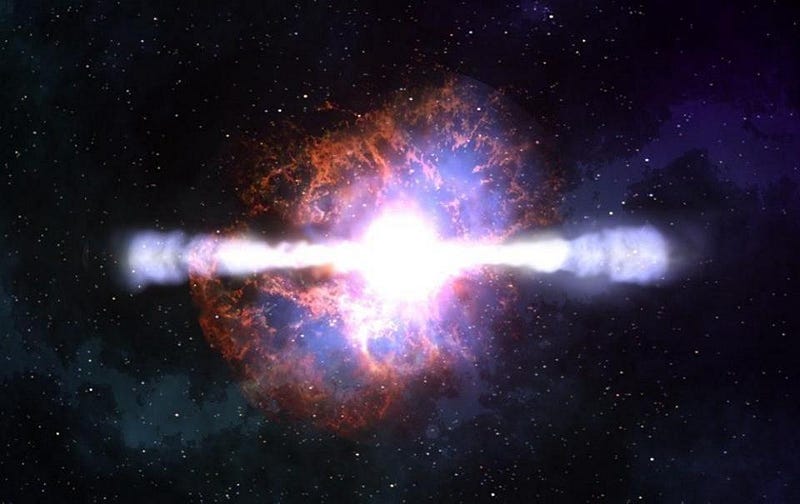
And that’s interesting! Not only should there be a reasonable chance of gamma rays, but there may even be a UV, optical, infrared, or radio counterpart. This may be regarded as a long shot, lottery-ticket type situation, given how sensitive LIGO is and how close such a signal would need to be. But it’s possible, and any new type of signal that’s possible has to be considered. Just a few days ago, noted astrophysicist J. Craig Wheeler tweeted out the following:
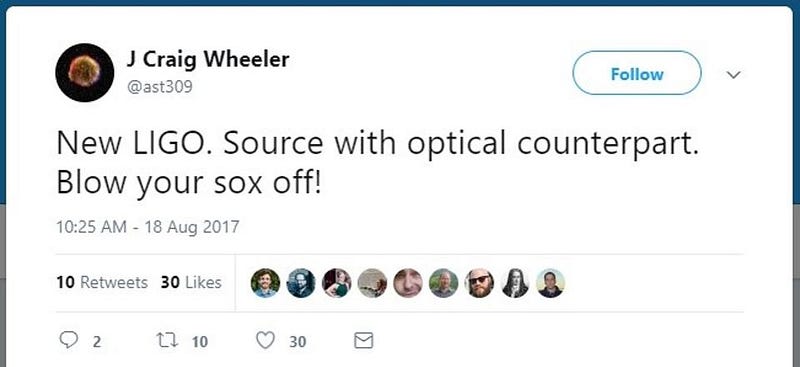
Could this be the first evidence of a neutron star-neutron star merger? Admittedly, this is a rumor/leak, rather than an official announcement by anyone affiliated with the collaboration, but when a world-renowned physicist makes a physics announcement, it’s worth considering the possibility that it’s true. If there’s an electromagnetic counterpart being sought, it’s highly likely that we’re not looking for a black hole merger, but something far more novel and exciting!
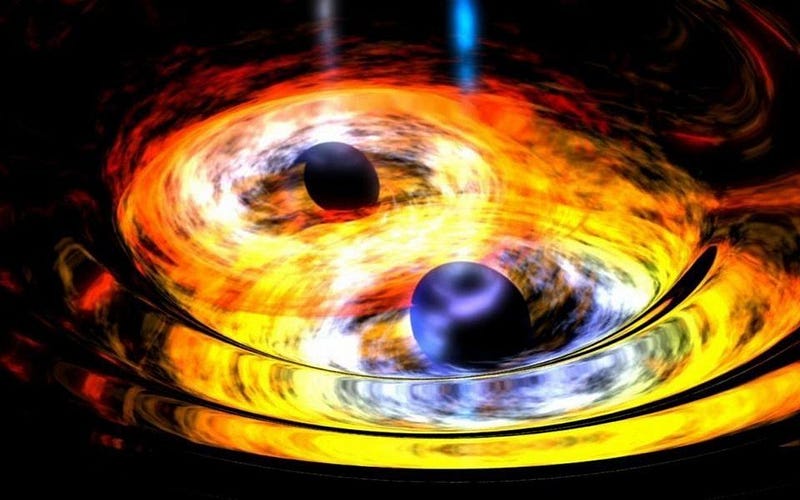
This may not be mere idle speculation or wishful thinking. LIGO spokesperson, David Shoemaker, didn’t deny the rumors or quash the possibility that there was something in the data unlike anything else ever seen. “A very exciting […] Observing run is drawing to a close August 25. We look forward to posting a top-level update at that time,” he communicated. But if you were interested in speculating, you may check out that, just four days after Wheeler’s rumor, the following observation took place.
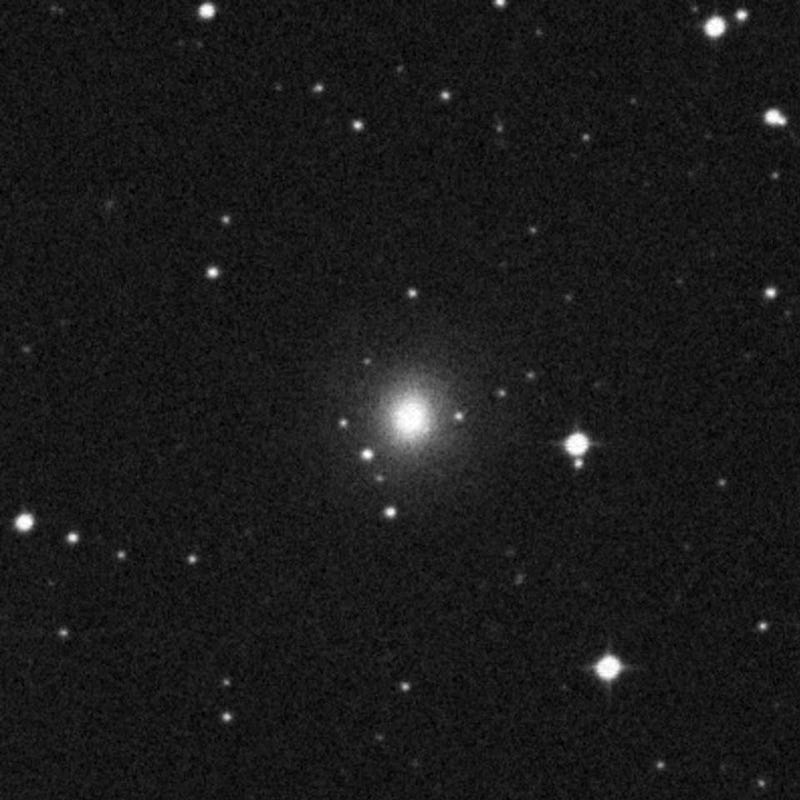
A binary neutron star merger candidate in the galaxy NGC 4993, shown above, was viewed by Hubble on August 22nd. Is there something worth seeing? Did two neutron stars just merge for the first time? And if so, have we successfully correlated the electromagnetic and gravitational wave sky for the first time?
We are present at an incredible time in history: at the birth of the observational science of gravitational wave astronomy. The coming decades will reveal a series of “firsts,” and that should include the first binary neutron star merger, the first pinpointing of a gravitational wave source, and the first correlation between gravitational waves and an electromagnetic signal. If nature is kind to us, and the rumors are true, we may have just unlocked all three.
Ethan Siegel is the author of Beyond the Galaxy and Treknology. You can pre-order his third book, currently in development: the Encyclopaedia Cosmologica.





